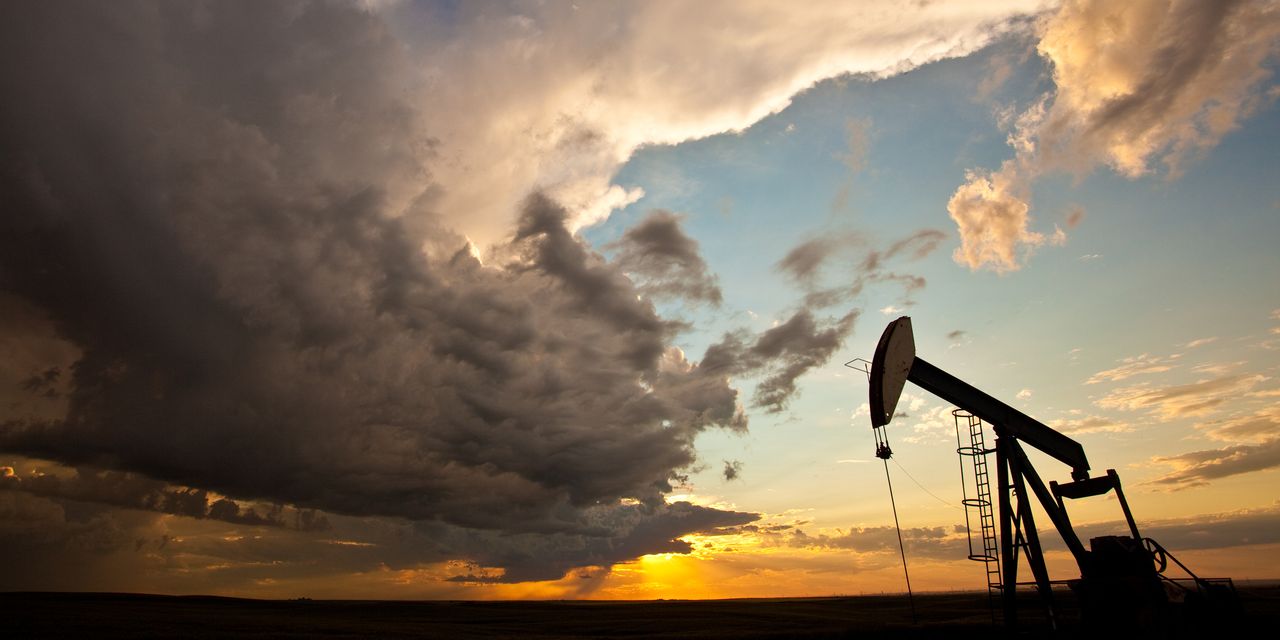Oil futures fell Monday, pulling global benchmark Brent crude prices down to their lowest finish since December 2021, with the outlook for energy demand a key focus ahead of a two-day U.S. Federal Reserve policy meeting this week.
Price action
-
August Brent crude
BRN00,
+3.44% BRNQ23,
+3.44% ,
the global benchmark, declined by $2.95, or 3.9%, to settle at $71.84 a barrel on ICE Futures Europe, for the lowest front-month contract settlement since Dec. 20, 2021, according to Dow Jones Market DAta. -
West Texas Intermediate crude for July delivery
CL.1,
+3.41% CL00,
+3.41% CLN23,
+3.41%
fell $3.05, or nearly 4.4%, to settle at $67.12 a barrel on the New York Mercantile Exchange, for the lowest finish since March 17. -
Back on Nymex, July gasoline
RBN23,
+2.85%
fell 4.3% to $2.48 a gallon, while July heating oil
HON23,
+3.09%
lost 2.2% to $2.31 a gallon. -
July natural gas
NGN23,
+2.65%
climbed by 0.5% at $2.27 per million British thermal units.
Market drivers
Brent crude saw the lowest close in about a year and a half on Monday, and U.S. crude-oil prices once again dropped below $70.
The dip below that key level for U.S. prices “has created a feeling of uneasiness among the OPEC cartel,” which only recently announced a major oil cut, and the “whole weight of this cut was shouldered by Saudi Arabia.” said Naeem Aslam, chief investment officer at Zaye Capital Markets.
At a meeting in early June, the Organization of the Petroleum Exporting Countries with de facto leader Saudi Arabia, and the group’s allies — together known as OPEC+ — extended previously agreed production cuts through the end of 2024, while Saudi Arabia voluntarily agreed to reduce its oil output by an additional 1 million barrels a day in July.
“Oil traders continue to worry about demand and hope that the revival in Chinese oil demand comes back into play,” said Aslam. “So far, Chinese economic data has been lackluster, which is creating a dent in oil demand while OPEC is trying its best to maintain oil supply.”
Meanwhile, Goldman Sachs cuts its December Brent oil-price forecast by nearly 10%, citing, in part, higher-than-expected supplies from sanctioned economies such as Iran and Russia.
WTI fell 2.2% last week, while Brent crude lost 1.8% as sharp gains at the start of last the week following Saudi Arabia’s announcement that it would voluntarily cut its oil production next month soon faded, overtaken by worries over demand.
Attention this week is on the Federal Reserve, which is seen as likely to hold interest rates unchanged after a breakneck series of hikes that have taken the fed-funds rate from near zero in March of last year to their current range of 5% to 5.25%. However, policy makers were also expected to signal that further hikes were likely in the offing to continue bringing down inflation.
“Should the Fed hint at further rate hikes later in the year, as many now expect, there could be further downside for the price of the barrel. This is because crude is priced in dollars, and a stronger greenback means a lower nominal value,” Ricardo Evangelista, senior analyst at ActivTrades, said in emailed comments.
“At the same time, U.S. monetary policy is important not just for the world’s largest economy but also for the rest of the world,” he wrote. “Should the Fed continue to focus on fighting persistently high inflation through stringent monetary tightening, it will eventually achieve its objective, but the side effect will be an economic slowdown. It’s this perspective of a Fed-driven decline in demand that is now being discounted by investors, creating a downside for oil prices.”
Read the full article here













